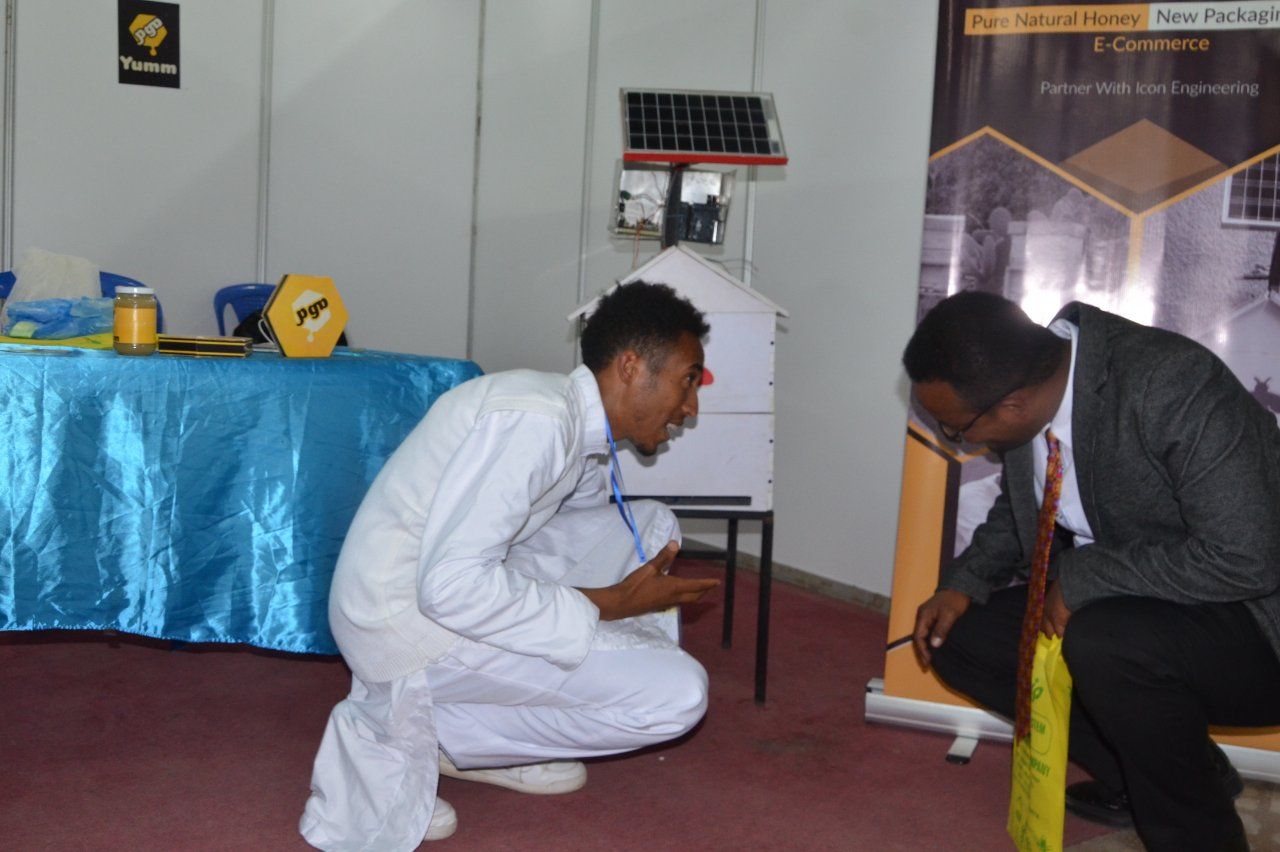Progress for 0 ad
Progress for 1 ad
Progress for 2 ad
Progress for 3 ad


Daniel Metaferiya
Addis Ababa, Ethiopia

Honey is produced in almost all parts of Ethiopia, with distinctive types of honey coming from different regions. Perhaps one of the most well-known and unique is Tigray’s white honey, attributed to the bees’ affection for a plant known as labiate. It has a pure white color and a low moisture content, and some believe it possesses medicinal properties.
Born and raised in Mekelle, the capital of Tigray, Nathnael Behailu grew up witnessing this special relationship his community had with white honey and was captivated by bees from a young age.
“As you study bees and get closer to them, you realize how truly amazing they are. For example, they function as colonies and male bees die after mating with the queen. Bees also express affection through biting! I receive as much love as they can give while I am working on my hives,” Nathnael jokingly shared with Shega.
Nathnael studied Electromechanical engineering at Addis Ababa Science and Technology University (AASTU), where he embarked on extensive research focused on honeybees and their honey production.
One of the primary issues Nathnael identified was related to wax. Bees produce wax as a crucial component for building honeycombs in their hives. Honeycombs serve multiple purposes within the hive, including storing honey, pollen, and larvae.
Nathnael explained, “Bees consume 8 kg of honey to produce 1 kg of wax. Imagine if there is 10 kg of wax; that means they ate 80 kg of honey to produce it. Bees take more time to produce wax than honey.”
To address this issue, Nathnael employed 3D printing to create honeycombs, aiming to boost productivity and assist bees in overcoming wax-related challenges. He states that his 3D-printed hexagon-shaped hive is more efficient than modern hives.
“Typically, we obtain approximately 20kg of honey mixed with wax from a modern hive. However, not all of the 20kg is pure honey. By providing pre-made honeycombs, the bees skip the entire process and simply fill the provided hexagons with honey,” Nathnael told Shega.
Another significant challenge Nathnael identified was the process of honey production, where hundreds of bees lose their lives—a matter of concern for him. Explaining the issue, he stated, “With traditional hives, farmers often have to remove the combs to assess the honey-making process, leading to the death of many bees during this comb removal.”
His 3D honeycomb features a removable, thin layer that separates the front and back. When this thin layer is removed, all the honey stored in the front and back portions cascades down to a thin line flowing into a purposefully designed tube to collect the dripping honey. This method allows for the collection of pure honey from the hives without disturbing the bees inside.
Additionally, a digital data-collecting device installed on the hives records information such as temperature, sound, humidity, and related metrics.
The device, infused with sensors, is powered by solar power. The data it collects is then transmitted to a dedicated website designed to store the data.
“If the comb weighs more than its normal weight, it indicates it is filled with honey. The system also sends notifications to the farmer in case of extreme temperatures—whether too hot or too cold—prompting them to adjust the hive’s temperature,” Nathnael explained.

Nathnael’s innovative approach earned him recognition and a $3,500 award from Heifer International, acknowledged through the Ayute Africa Challenge in August 2023.
The outside world is waking up to the qualities of Ethiopian honey, too. In 2008, the European Union officially gave the green light to imports of Ethiopian honey. However, over a decade later, the country is still only exporting a mere fraction of what it produces annually.
Ethiopia is one of the top 10 producers of honey in the world, and it is the largest one in Africa. Despite this, beekeeping remains largely untapped as a formal industry in Ethiopia. More than 90 percent of Ethiopia’s honey is still produced using traditional hives. Many farmers lack modern technologies, operate on a small scale, and are unaware of the quality of their products and potential markets outside of their immediate communities.
Traditional beehives yield between 5 and 8 kg per bee colony per year, though more modern hives—top bar hives or frame hives—will yield up to 20 or 30 kg annually.
Nathnael, who founded Robox, a company that focuses on teaching kids’ robotics courses, is now working on kickstarting his innovation on a wider scale. Nathnael aims to sell his hives as well as produce honey in-house.
His product, dubbed Yumm, has already helped over 50 beekeepers across different regions in Ethiopia increase their honey production by 40% and improve their honey quality by 30%. It has also received positive feedback from consumers who reported enhanced taste, freshness, and nutritional value of Yumm’s honey.
Talking about the challenges he faces, Nathnael mentions the difficulty in finding a suitable workspace. He adds that Yummy’s current workspace is inside AASTU, making it challenging for him.
However, Nathnael chooses to focus on the market demand for this technology for aspiration, noting that people have already expressed interest and purchased the product. Yet, setting a fixed price for the hives has become challenging due to the imported components from China, and the pricing details are influenced by forex and customs taxation processes.
A standard beehive costs around five thousand birr, while the bee colonies themselves range from three to five thousand birr. With his device priced between 10 and 15 thousand birr, Nathnael is confident that it can eliminate production waste and prevent the loss of bees in the process.
Nathnael holds a tremendous passion for engineering and believes that technology and innovation can further solve problems in honey production and day-to-day life.